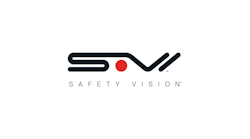Houston, Texas
Vision
Chalon Dilber
Director of Marketing and Product Management
Safety Vision has been a leading provider of video systems for the mobile safety and security markets for nearly 18 years. Throughout this time, we have witnessed the rapid evolution as well as introduction of disruptive new technologies as applied to all aspects of video security — ranging from sensors and imaging to networking, storage and software. In a similar vein, our marketing strategies have evolved to take advantage of the new communication paths enabled by the internet. Empowering customers with access to the information they need when they need it is the foundation of our marketing and communications strategy.
The proliferation of social networking, instant communications and online video sites has been a powerful boon for our marketing efforts. Online tools have been invaluable for activities ranging from launching new products to training customers and business partners on our technologies and services. It is important to note that our utilization of these and similar services is continually evolving and involves plenty of trial-and-error. Fortunately, the Internet provides virtually real-time feedback with analytics that allow us to measure and adopt what’s working and discard what is ineffective.
While optimizing our use of online tools and services has been a key focus of our marketing efforts, we have also evolved and begun establishing best practices for working with our traditional media partners. Our end user base consists of businesses and government entities with mobile fleet operations. Traditionally, print media has been the most effective way to reach these specialized customers. Today, print media operations that have effectively transitioned a good part of their qualified subscriber base online are the most attractive partners for our advertising, trade show and webinar funds. The ability to quantify and track results combined with trusted content that educates our targeted end users is critical when budgeting for advertising, promotions and new technology awareness campaigns.
Although our focus up to this point has been on the importance of online tools and services, this provides a good segue into the most important element of successful marketing strategies; people. The faster technologies and communications change, the more important the human factor becomes. We have invested in training and growing our field support staff as well as marketing and engineering resources. A well implemented feedback process provides marketing and product management groups with timely information on customer needs and pain points. This process allows us to prioritize new features on products while explaining benefits in a language that the customer can relate to. In place of overwhelming the customer with the speeds and feeds of our technologies we are focusing on communicating the benefits and solutions to common problems. To that end, we are investing in educating our current and future customers with white papers, blogs, webinars and road shows. Our goal is to create an easily accessible environment where customers can consume relevant content at their own pace; interact with products outside the controlled atmosphere of trade shows; comfortably ask questions, and benefit from open forums with their peers.
In summary, investing in our human capital, focusing on benefits and solutions instead of technical specifications, and continually refining our online presence are the pillars on which our successful marketing strategies stand.



